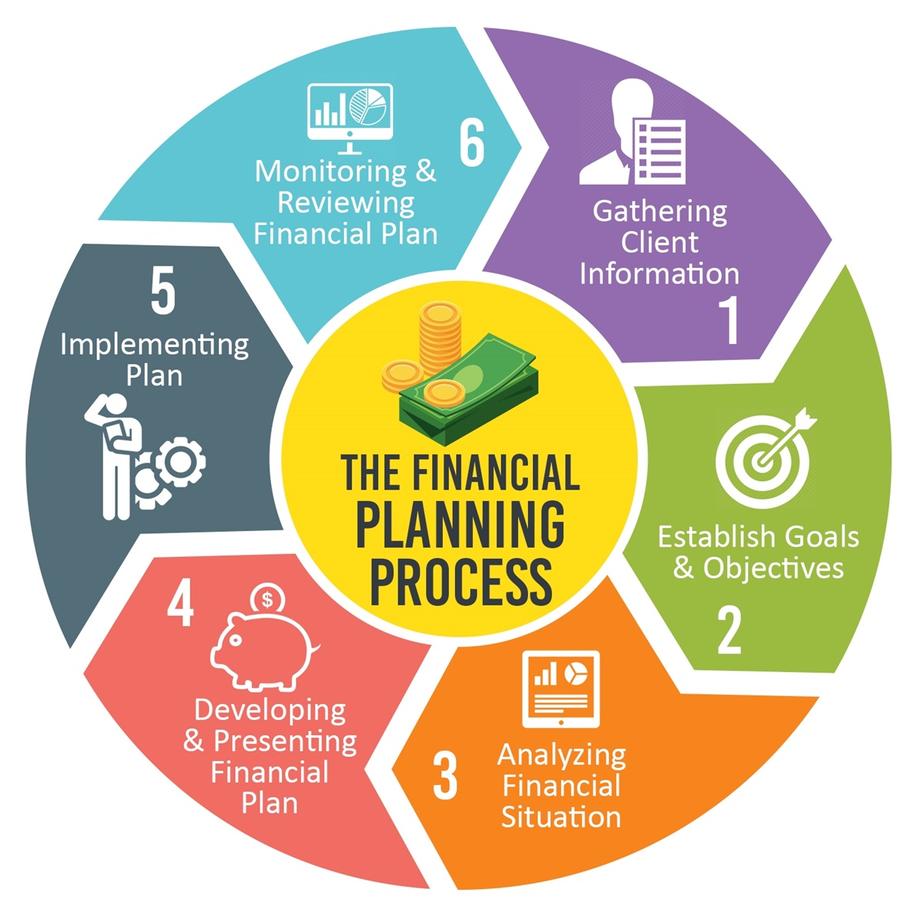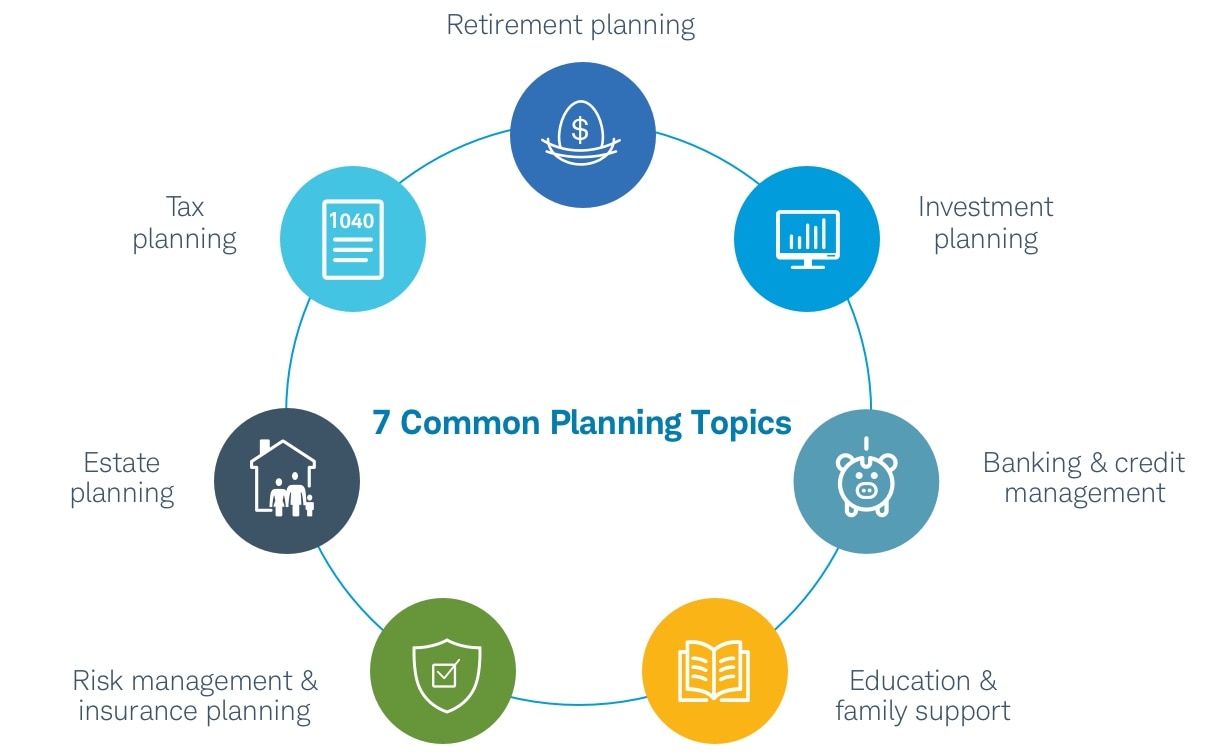Financial planning for retirement ensures financial security and peace of mind during your golden years. It involves budgeting, saving, and investing wisely.
Retirement planning is essential for a comfortable and stress-free future. By starting early and making informed decisions, you can build a solid financial foundation. Begin by assessing your current financial status and estimating future expenses. Set clear goals and create a budget to track your savings.
Consider various investment options like 401(k) plans, IRAs, and mutual funds to grow your wealth. Regularly review your plan and adjust as needed to stay on track. Proper financial planning for retirement helps you enjoy a worry-free and fulfilling post-work life.
Importance Of Early Planning
Planning for retirement early is crucial. It ensures financial stability during your golden years. Early planning allows you to save more money over time. It also helps to avoid stress related to financial uncertainties.
Benefits Of Starting Early
Starting retirement planning early has many advantages:
- Compound Interest: Early investments grow exponentially due to compound interest.
- Risk Management: More time to recover from market fluctuations.
- Lower Stress: Peace of mind knowing you’re financially prepared.
- Better Lifestyle: More funds for a comfortable retirement lifestyle.
Risks Of Delaying
Delaying retirement planning can lead to several risks:
- Higher Financial Burden: Less time to save means higher monthly savings needed.
- Increased Stress: Worry about not having enough funds for retirement.
- Limited Investment Options: Fewer opportunities for high-return investments.
- Dependence on Others: Risk of relying on family or government aid.

Credit: www.boyerfinancialgroup.com
Setting Retirement Goals
Setting retirement goals is the first step to secure your future. These goals guide your savings and investments. Start by understanding your needs and desires for retirement.
Determining Retirement Age
Decide your retirement age. This will influence your savings plan. Many people aim to retire at 65. Some prefer to retire earlier or later. Consider your health, job satisfaction, and financial stability. Use a retirement age calculator to help you.
Estimating Retirement Expenses
Estimate your monthly and yearly expenses during retirement. This includes living costs, healthcare, travel, and hobbies. Make a detailed list of expected expenses:
| Expense Category | Estimated Monthly Cost | Estimated Yearly Cost |
|---|---|---|
| Housing | $1,200 | $14,400 |
| Healthcare | $400 | $4,800 |
| Food | $300 | $3,600 |
| Travel | $200 | $2,400 |
| Entertainment | $150 | $1,800 |
Use these estimates to plan your savings. Ensure you account for inflation. Regularly review and adjust your estimates.
Set clear and achievable retirement goals. This makes planning easier and your future secure.
Investment Strategies
Planning for retirement is crucial. It ensures a comfortable and secure future. Implementing smart investment strategies can enhance your retirement savings. Effective strategies help in growing your wealth steadily.
Diversifying Your Portfolio
Diversification spreads your investments across various assets. This reduces the risk of losing money. A well-diversified portfolio includes stocks, bonds, and real estate. It may also include mutual funds and ETFs.
Here is an example of a diversified portfolio:
| Asset Type | Percentage |
|---|---|
| Stocks | 40% |
| Bonds | 30% |
| Real Estate | 20% |
| Mutual Funds & ETFs | 10% |
Risk Management
Managing risk is essential in retirement planning. Assess your risk tolerance first. This helps in choosing suitable investments. Younger investors might take more risks. Older investors should opt for safer options.
Here are some risk management tips:
- Regularly review your portfolio.
- Invest in low-risk assets like bonds.
- Consider dividend-paying stocks.
- Avoid putting all money in one investment.
Balancing risk and reward is key. This ensures a stable and secure retirement.

Credit: www.schwab.com
Retirement Accounts
Planning for retirement involves understanding various retirement accounts. These accounts help you save and invest money for your future. Knowing the different types helps you make better decisions.
401(k) Plans
A 401(k) plan is an employer-sponsored retirement account. Employees can contribute a portion of their salary. Contributions are often pre-tax, reducing your taxable income.
Many employers offer a matching contribution. This means they add money to your account based on your contributions. It’s like getting free money for your retirement.
- Pre-tax contributions
- Employer matching
- Investment options
- Tax-deferred growth
You can invest your 401(k) in various options, like stocks and bonds. The money grows tax-deferred until you withdraw it in retirement. This helps your savings grow faster over time.
Individual Retirement Accounts (iras)
An Individual Retirement Account (IRA) is another option. IRAs are not tied to your employer. You open an IRA yourself at a financial institution.
There are two main types of IRAs: Traditional IRA and Roth IRA.
| Traditional IRA | Roth IRA |
|---|---|
| Pre-tax contributions | Post-tax contributions |
| Tax-deductible | No tax deduction |
| Tax-deferred growth | Tax-free growth |
| Taxes on withdrawals | Tax-free withdrawals |
In a Traditional IRA, you contribute pre-tax money. This lowers your taxable income now. You pay taxes when you withdraw the money in retirement.
In a Roth IRA, you contribute post-tax money. This means no tax deduction now, but your money grows tax-free. Withdrawals in retirement are also tax-free.
Both types of IRAs offer various investment options. You can choose from stocks, bonds, and mutual funds. This flexibility helps you tailor your retirement savings to your needs.

Maximizing Social Security
Maximizing Social Security benefits is crucial for a secure retirement. Understanding how to optimize your benefits can provide financial stability. This section will guide you through the essentials.
Understanding Benefits
Your Social Security benefits depend on your earnings history. The Social Security Administration (SSA) calculates your average indexed monthly earnings (AIME) over your 35 highest-earning years. This determines your primary insurance amount (PIA).
The age at which you claim benefits affects the amount you receive. Claiming before full retirement age (FRA) results in reduced benefits. Claiming after FRA increases your benefits. FRA varies based on your birth year.
| Birth Year | Full Retirement Age (FRA) |
|---|---|
| 1943-1954 | 66 |
| 1955 | 66 and 2 months |
| 1956 | 66 and 4 months |
| 1957 | 66 and 6 months |
| 1958 | 66 and 8 months |
| 1959 | 66 and 10 months |
| 1960 and later | 67 |
Optimal Claiming Strategies
Choosing the right time to claim Social Security is essential. Here are some strategies:
- Claim Early: You can claim benefits at age 62. This results in reduced benefits, but you receive them for a longer period.
- Claim at FRA: Claiming at full retirement age ensures you receive your full PIA. This is the standard benefit amount.
- Delayed Retirement Credits: Delaying benefits past FRA increases your monthly benefit. For each year you delay, benefits increase by 8% until age 70.
Consider your health, life expectancy, and financial needs. These factors influence the best claiming strategy for you.
- Calculate your estimated benefits using the SSA’s online calculator.
- Review your earnings record for accuracy.
- Consult a financial advisor to develop a personalized strategy.
Maximizing Social Security requires careful planning. Make informed decisions to ensure a comfortable retirement.

Credit: www.forbes.com
Healthcare Planning
Proper healthcare planning is crucial for a comfortable retirement. As you age, medical needs change. Planning ensures you can handle these changes. Let’s explore some key aspects of healthcare planning.
Medicare Options
Medicare is a federal health insurance program for seniors. There are different parts of Medicare:
- Part A: Hospital insurance covering inpatient care.
- Part B: Medical insurance covering outpatient care.
- Part C: Medicare Advantage combining A and B, often with extra benefits.
- Part D: Prescription drug coverage.
Choosing the right Medicare plan is essential. Compare different plans to find the best fit. Consider your medical needs and budget. Some plans offer additional benefits like dental and vision care.
Long-term Care Insurance
Long-term care insurance covers services not included in Medicare. This includes help with daily activities, like bathing and eating. It also covers nursing home and assisted living costs.
Here are some key benefits of long-term care insurance:
- Protects your savings from high care costs.
- Provides more care options.
- Gives peace of mind to you and your family.
Buy long-term care insurance while you are healthy. Premiums are lower when you are younger. Compare different policies to find the best coverage.
Tax Considerations
Retirement planning involves many factors, and tax considerations are crucial. Understanding tax implications can maximize your savings and reduce stress.
Tax-deferred Accounts
Tax-deferred accounts like 401(k)s and IRAs delay tax payments. You contribute pre-tax money, which reduces your taxable income now. The funds grow tax-free until you withdraw them. This can significantly boost your savings over time.
- 401(k): Employer-sponsored, often with matching contributions
- Traditional IRA: Individual account, tax-deductible contributions
Remember, withdrawals after age 59½ are taxed as regular income. Early withdrawals face penalties, so plan accordingly.
Tax-efficient Withdrawals
Strategizing your withdrawals can save you money. Start with taxable accounts, then tax-deferred, and finally Roth accounts.
- Taxable Accounts: Pay capital gains tax, often lower than income tax.
- Tax-Deferred Accounts: Pay regular income tax on withdrawals.
- Roth Accounts: Withdraw tax-free if rules are followed.
Consider the Required Minimum Distributions (RMDs). You must start RMDs at age 72 from tax-deferred accounts. Failure to do so results in hefty penalties.
| Account Type | Tax Benefit | Withdrawal Rules |
|---|---|---|
| 401(k) | Pre-tax contributions | Taxed as income, penalties for early withdrawals |
| Traditional IRA | Tax-deductible contributions | Taxed as income, penalties for early withdrawals |
| Roth IRA | Tax-free growth and withdrawals | Tax-free if rules are followed |
Estate Planning
Estate planning is crucial for financial security in retirement. It ensures your assets are distributed according to your wishes. Proper estate planning avoids disputes among your heirs. Let’s delve into two key components: Wills and Trusts, and Beneficiary Designations.
Wills And Trusts
A will is a legal document. It outlines how your assets will be distributed after you pass away. It also names guardians for minor children. Without a will, the state decides who gets your assets.
A trust is another tool for estate planning. Trusts can help manage your assets while you are alive. They can also distribute assets after your death. Unlike wills, trusts do not go through probate. This means your assets can be transferred more quickly and privately.
| Wills | Trusts |
|---|---|
| Names guardians for children | Avoids probate |
| Distributes assets after death | Manages assets during lifetime |
| Subject to probate | Private and quick asset transfer |
Beneficiary Designations
Beneficiary designations are important in estate planning. These designations determine who receives assets from accounts like life insurance, retirement, or pensions. They override instructions in your will.
It’s crucial to keep beneficiary designations updated. Life events such as marriage, divorce, or the birth of a child may require changes. Failing to update these can result in unintended beneficiaries.
Here’s a quick checklist to ensure your designations are up to date:
- Review your accounts regularly.
- Update designations after major life events.
- Ensure consistency with your will and trust.
Effective estate planning ensures your wishes are honored and reduces stress for your loved ones. Whether through wills, trusts, or beneficiary designations, planning ahead is key.
Frequently Asked Questions
What Is The $1000 A Month Rule For Retirement?
The $1000 a month rule suggests saving enough to withdraw $1000 monthly in retirement. It requires a $300,000 nest egg.
How To Create A Financial Plan For Retirement?
Create a retirement budget. Save and invest early. Diversify investments. Monitor and adjust your plan regularly. Consult a financial advisor.
What Is The 4 Rule In Retirement?
The 4% rule in retirement suggests withdrawing 4% of your retirement savings annually to ensure it lasts 30 years.
What Is The 70% Rule For Retirement?
The 70% rule suggests you need 70% of your pre-retirement income to maintain your lifestyle during retirement. This ensures financial stability.
Conclusion
Planning for retirement is essential to secure a comfortable future. Start early, budget wisely, and invest smartly. Seek professional advice if needed. Making informed decisions today will ensure financial stability in your golden years. Take charge of your financial future and enjoy a worry-free retirement.

